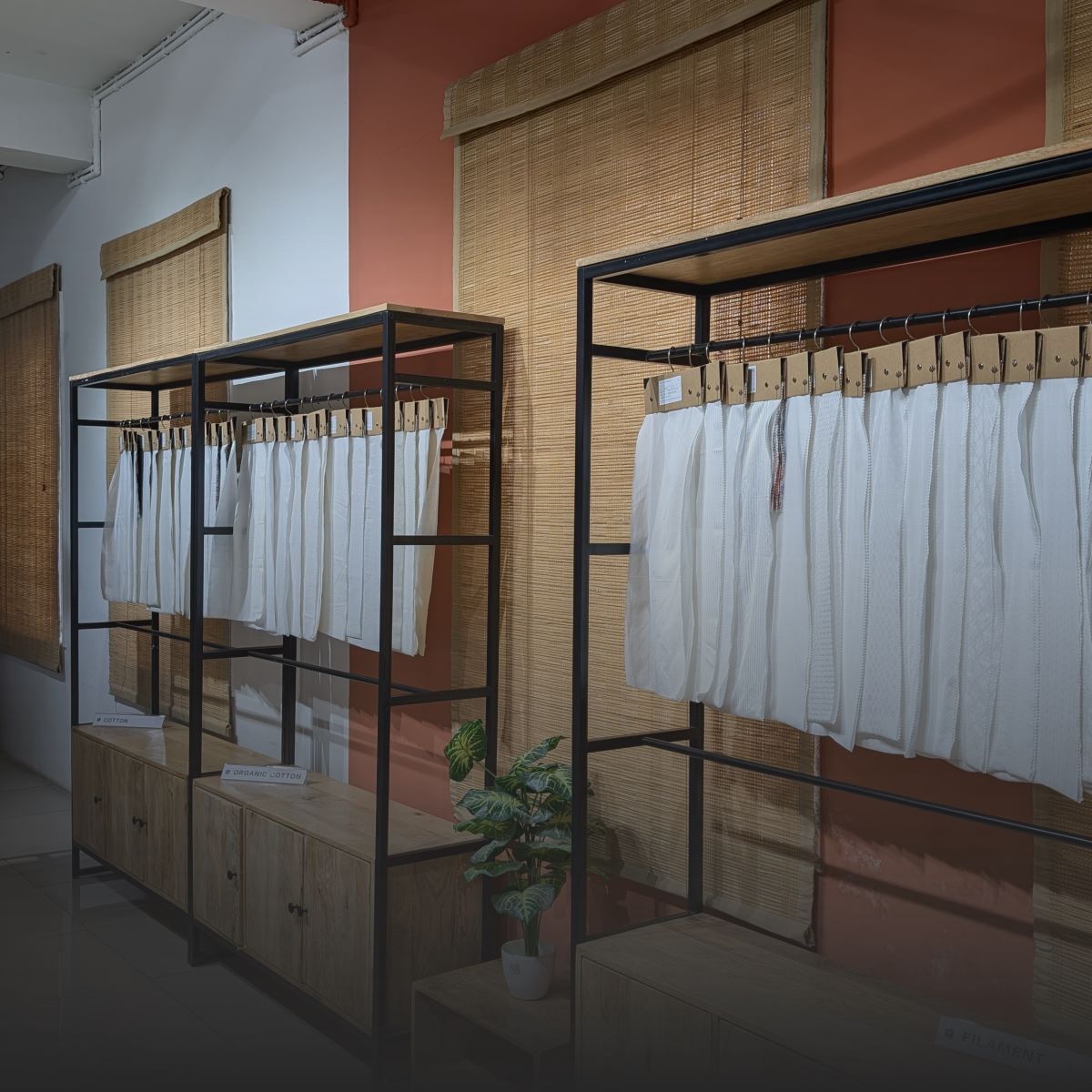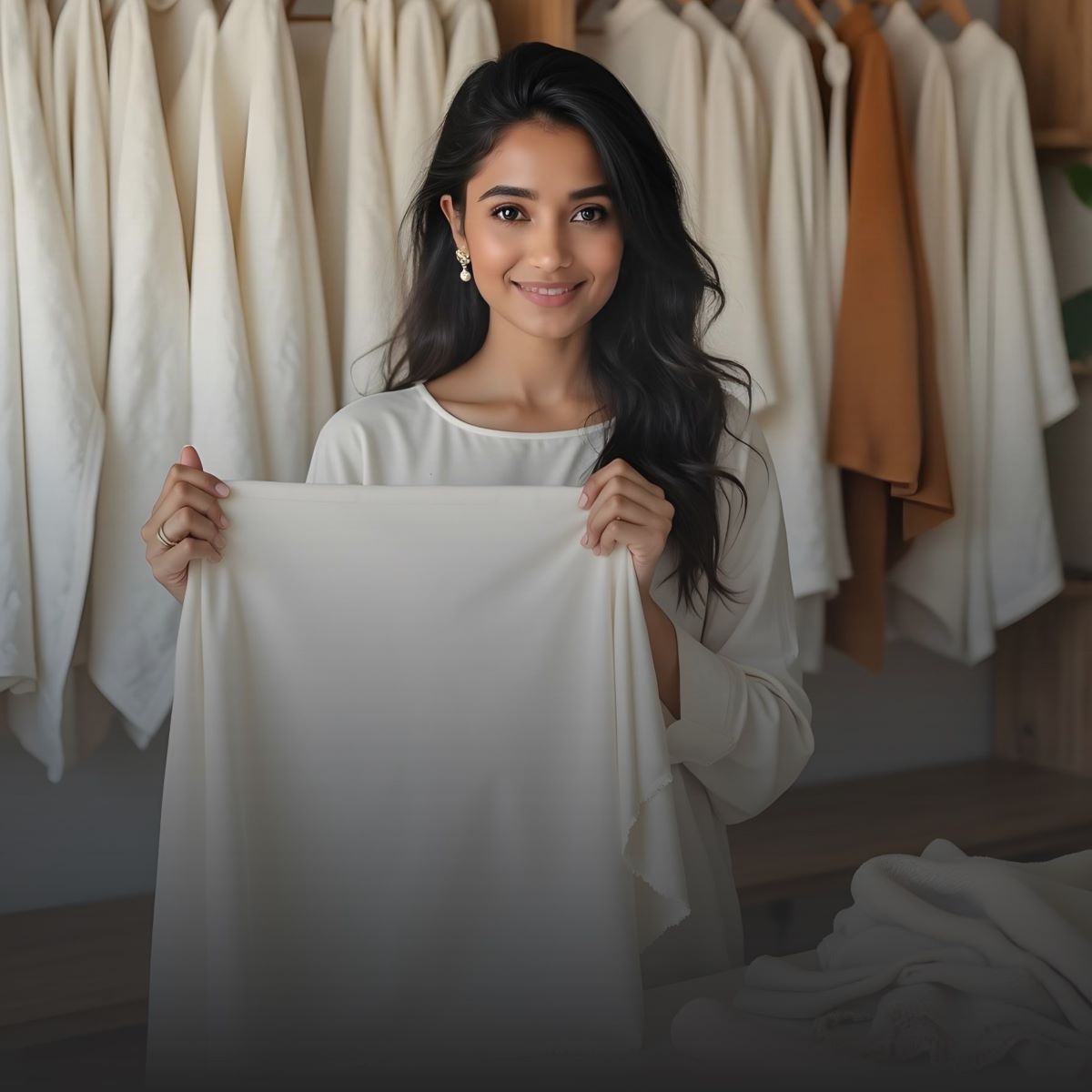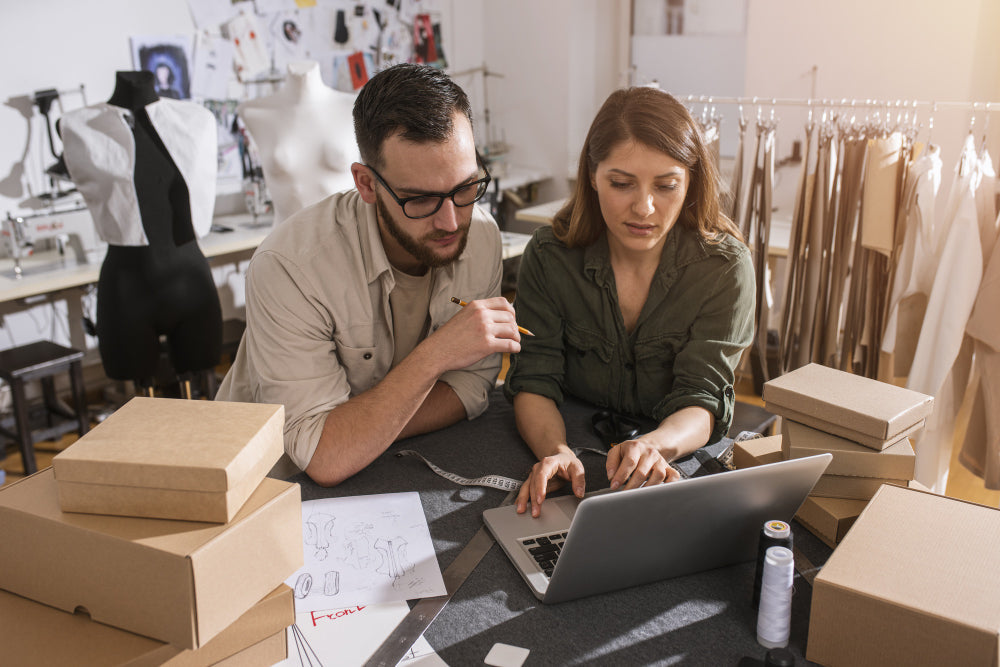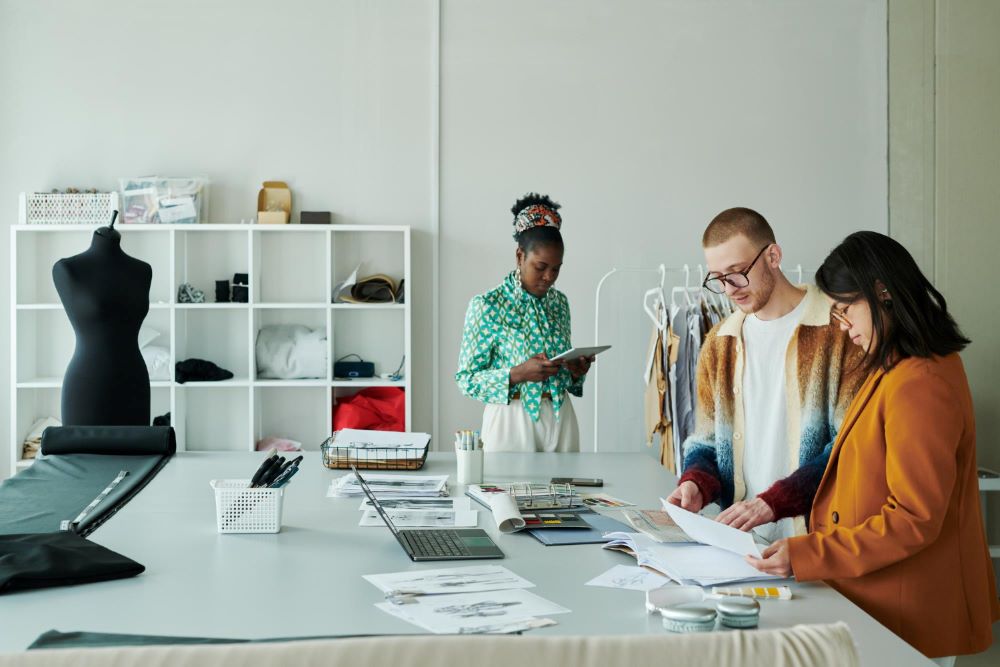Thinking about launching your own clothing line?
This is the first thing every artist thinks about:
Just how much does it cost to start a clothing line?
Really? There isn't just one answer. Costs vary depending on many factors, such as where you get your fabric sourcing, how you market your clothes, and how much inventory you need. This is true whether you're starting an eco-friendly fashion company or a direct-to-consumer streetwear label. We will talk about startup costs and pricing strategy to marketing tips and manufacturing models in this full guide. This guide will help you confidently plan your clothing business, whether you're a creator, a fashion student, or the founder of a new company. Let's get a better sense of it.
Also Read: Guide to Reducing Waste in Fabric Sourcing and Inventory Management
Key Takeaway
- The price to start a clothesline can range from $500 for print-on-demand to over $20,000 for full-scale manufacturing.
- The budget is based on your production scale, brand model, and product category.
- Planning ahead helps you keep starting costs low and grow in a way that doesn't hurt the business.
1. Product Pricing Model for a Clothing Brand

Before you buy fabric or pay for other business costs, you need to know your pricing plan and who you want to sell to:
- Positioning a brand: Do you want to be affordable, in the middle, or high-end?
- The Ideal Customer: You should plan for people who are college students, professionals, eco-friendly shoppers, or people who want to spend a lot of money.
- USP (Unique Selling Proposition): What makes your brand different? This is called a USP. Is it style, ease, design, or sustainability?
You'll have a better idea of how to price your goods once you know these things for sure. The way you set your prices should match the way you present your brand. This will help you choose prices that are right for your business.
Popular Pricing Formula:
- Wholesale Price = [Cost of Goods] × 2
- Retail Price = [Wholesale Price] × 2 to 2.5
(Adjust according to brand positioning)
You can use this method as a starting point, but feel free to make changes based on things like quality, demand, and market trends.
2. How To Calculate the Cost of Starting a Clothing Line Business

You could have something like this for your startup cost breakdown:
|
Cost Element |
Estimated Range |
|
Design & Sampling |
$500 – $2,000 |
|
Fabric Sourcing |
$300 – $1,500 |
|
Manufacturing (bulk) |
$2,000 – $15,000 |
|
Print-on-demand setup |
$0 – $500 |
|
Website & Branding |
$500 – $2,000 |
|
Marketing (initial budget) |
$500 – $3,000 |
|
Packaging & Shipping Setup |
$300 – $1,000 |
|
Legal & Admin |
$200 – $800 |
Also Read: How To Set Up Production And Manufacturing For Your Clothing Business Line In The USA
3. What Affects Your Startup Cost?

Before you start budgeting, it's essential to understand the various factors that will affect your startup costs:
1. Fabric Sourcing: Your fabric choice affects your production cost, brand image, and clothing appearance. Compact, slub, and organic cotton vary in price, texture, and quality. Organic or GOTS-certified cotton costs more due to ethical cultivation and certification, while mill-made cotton is cheaper.
Mid-premium brands like viscose and modal for their silk-like drape, but prices vary by GSM and weave quality. Although Tencel, Bemberg, and Cupro are eco-friendly materials, they cost more.
Establishing a strong relationship with a trusted fabric supplier lets you compare prices, access a vast selection, and negotiate better bulk purchase pricing. It also allows unique printing and blends to match your brand.
2. Manufacturing: The cost of manufacturing depends on whether the work is done in-house or by someone else. Making things overseas might be cheaper, but there are different quality and labour issues to think about. Even though it costs more, local production gives you more control over quality and faster turnarounds.
3. Design & Development: Your costs are directly related to how complicated your plans are. It costs more because custom designs, unique prints, and high-end finishes take more time and skill to make. The costs go up when you hire a freelance designer or buy design tools.
4. Branding & Packaging: It's important not to forget about the costs of branding (logo design, labels, and hang tags) and packing (boxes, tissue paper, and custom tape). Custom packing may cost more than standard packaging, but it gives your brand more personality and helps you stand out in the market.
5. Marketing: Marketing costs money for everything from digital ads to working with influencers. To get people to notice your brand, you'll need to set aside money for paid ads, social media promotions, content creation, and maybe even hiring influencers.
4. How to Price Your Clothing Line in the U.S. Market

It's time to set a selling price that makes you a profit while still being competitive. This includes the cost of fabric, trims, labor, packaging, and shipping for each garment. Cost ÷ 2.5 to 3 is a popular formula used in fashion to figure out the retail price.
Say it costs you $20 to make a top. You would price it between $50 and $60. Some brands that sell directly to consumers use a lower multiplier (2–2.5) to keep prices low while still making sure they have good profit margins. Think about how to position your business, who you want to sell to, and how much other companies charge. In your price explanation, make sure to point out that the high-end fabrics you're using, like organic cotton or TencelTM, are what make the item valuable.
A pricing plan can be established in the following manner:
- Calculate Your Costs: The prices of making your product include the fabric, the manufacturing, the design, the packaging, and the branding. This is what your base cost per unit is.
- Add Desired Profit Margin: Choose how much of a profit you want to make after you know your base costs. Depending on their marketplace, most clothing brands mark up their items by 50% to 100%.
- Market Research: Check out what your rivals are charging for similar items. This will help you set prices that are competitive and will help your business stay open.
- Include Shipping & Handling: Don't forget how much shipping will cost. Whether you ship for free or charge customers, make sure that these costs are included in your prices.
-
Final Pricing: Your final selling price will be found by adding up all the costs and the amount of profit you want to make.
Building Your Inventory Strategy
Plan your collection well to avoid having too much or too little of something. Small clotheslines should start with a small number of styles (three to five) and make only a few hundred of each style at a time. Review and sales information can be used to place a new order. A lot of new businesses in the United States use third-party inventory tools like Shopify, Zoho Inventory, or QuickBooks Commerce to keep track of their stock in real-time. To lower inventory risk, you might also want to use pre-orders or made-to-order models. This is especially important if you're running a sustainable brand that gets low MOQs from fabric suppliers like Fabriclore.
5. Tips to Reduce Startup Costs

It doesn't cost a lot of money to start a clothesline. You can cut down on initial costs by a lot while still building a strong foundation if you plan well and make wise choices. Here are some starting cost-cutting tips.
- Start Small: Focus on a smaller range of goods or limited editions to see how well they sell in the market before you start making more. This lowers the original cost and lets you make changes based on what people say.
- Use pre-orders: Taking pre-orders can help you get money before the production process starts. This lowers your financial risk and ensures you only buy what has already been bought.
- Outsource Manufacturing: Instead of building your plant, you could use print-on-demand or work with manufacturers who can make small batches. This removes big upfront costs that come with goods and storage.
6. Understand Your Market Segment
Figuring out your situation can help you decide how to market and price your products.
- Premium: Top-notch materials, one-of-a-kind patterns, and small runs. People willing to pay more for privacy are who you'll go after.
- Mid-Range: A mid-range product is a good mix of quality and price, with trendy but long-lasting items available at fair prices.
- Accessible to all: fabrics that are less expensive and production done on a larger scale are used to appeal to a broad audience looking for cheap choices.
|
Market Segment |
Price Range |
Customer Type |
|
Mass Market |
$10 – $50 |
Value-conscious |
|
Mid-Tier |
$50 – $150 |
Style + quality seekers |
|
Premium |
$150 – $500 |
Brand + experience |
|
Luxury |
$500+ |
Niche, exclusive buyers |
7. Cost Comparison: Manufacturing vs. Customizing
Know the financial consequences of several production models before starting your clothes company. A quick comparison:
|
Model |
Pros |
Cons |
|
Full Manufacturing |
Full creative control, strong brand identity |
Higher cost, larger upfront investment |
|
Customizing Blanks |
Lower cost, faster launch |
Limited design flexibility |
|
Print-on-Demand |
Zero inventory, ideal for testing ideas |
Lower profit margins, limited material and fit choices |
i. Startup and Manufacturing Costs
Starting your first collection from the ground up involves planning for design, fabric sourcing, sampling, and production. The more complex and tailored your designs become, the greater your initial investment will be.
ii. Manufacturing from Scratch vs. Customizing Ready-Made Garments
-
Manufacturing from scratch" means getting the fabric, making patterns, cutting it out, and sewing it together. It gives you more artistic freedom but takes longer and costs more.
-
Customizing ready-made garments (e.g., screen printing, embroidery, patchwork) is cheaper, but it limits the freedom of design and could hurt the brand's reputation.
iii. Design Costs
There is a wide range of design costs based on your approach:
- Designers working independently: $500–$5,000.
- DIY design software, Such as Adobe Illustrator, costs between $20 and $60 per month.
iv. Online Store Costs
- Basic website (DIY or template-based): $500–$1,000.
- Custom e-commerce store: $2,000–$5,000.
- Subscription-based platforms like Shopify or BigCommerce: start at $29/month.
v. Labor Costs
Expect to pay for skilled professionals:
- Freelancers: $500–$2,000/month.
- Full-time staff: higher ongoing expenses depending on roles and experience.
vi. Marketing Costs
To achieve exposure, marketing is absolutely necessary:
- Budget: $500–$5,000/month
- Includes: Advertising on social platforms, partnerships with influencers, search engine optimization, and producing engaging content.
vii. Shipping Costs
Plan your arrangements ahead of time, whether you charge for shipping or give it away for free. Rates for domestic and foreign shipping, packaging, and possible return handling costs should all be thought about.
8. Remember that website and tech costs add up.

Having an online profile is essential, but it costs money every month. Plan for these things:
- Plans for Shopify or BigCommerce start at $29 a month.
- Custom website design costs between $500 and $5,000, based on how complicated the site is.
- Hosting for a domain, SSL, and emails costs about $50 to $200 a year.
Putting money into a website that works and has a brand early on builds trust and leads to more sales.
9. Costs of labour to think about

Your costs for human resources will depend on the size and type of your business:
- Freelance Designers: $500 to $2,000 a month for freelance designers.
- Makers of patterns and sample tailors: Charged by the hour or by the clothing.
- Full-Time Staff: When you need to grow, full-time staff is best because they have set monthly salaries and costs.
When planning your budget for labor, don't forget to include jobs for design, sampling, and possible customer service.
10. Smart Ways to Market Clothing Brands

Tips for Paid Marketing
- Use ads on Facebook and Instagram: Start small and try out different kinds of creatives, like movies and carousels.
- Targeting with accuracy: You can choose segments based on age, style choices, or behavior.
- Get to know micro-influencers: Partners willing to work together on a budget are often more engaged. Offer partner deals or free products.
Tips for Organic Marketing
Create a branded look on Instagram: Brand trust is built on consistent images and stories.
- Share Behind-the-Scenes Content: Being honest gives your business a human touch and increases engagement.
- Encourage UGC: To get people to post about wearing your goods, ask happy customers to do so and offer discounts or shoutouts in return.
- Tell Your Story: Talk about how you became a founder, how you create things, or your focus on sustainability.
11. Most Profitable Clothing Segments

Several markets consistently demonstrate superior profitability and client loyalty:
- Sustainable Fashion: People who care about the environment like to buy materials made from organic cotton, bamboo, and Cupro.
- Niche Apparel: The markets for plus-size, maternity, and modest clothing aren't well covered yet, but they're growing quickly.
- Luxury & Designer Lines: Custom, handcrafted, or limited-edition clothes can be expensive and complicated.
12. Business Models to Choose From

Standard Manufacturing Blueprint
-
Involves sourcing fabric creating designs, developing samples, and producing bulk garments.
-
Ideal for building a strong company identity and full creative power, but it needs more capital.
Print-on-Demand Blueprint
-
Upload your designs to platforms that only print and ship when someone makes an order.
-
Great for testing ideas and avoiding inventory, but profit margins are lower, and fabric choices are limited.
Choosing The Right Fabric: Why It’s The Backbone Of Your Brand
The success of your clothes line starts with the fabrics you choose. Americans care about comfort, longevity, and, more and more, sustainability. Choosing the wrong fabric can hurt the image of your brand and cause a lot of people to return items. Concentrate on suppliers who offer:
- Cotton, rayon, linen blends for basics and formalwear.
- Modal, bamboo, and organic cotton for sustainable lines.
- Stretch knits and polyester blends for activewear.
Make sure your provider is experienced in fabric wholesale suppliers USA, especially if you're starting small and need flexibility.
🌟 Call to Action
Looking for clothing material suppliers?
Fabriclore offers premium fabrics and low-MOQ wholesale options — perfect for fashion startups.
Kickstart your clothing line today!
Strategic Insight: Collaborate With The Ideal Sourcing Platform
Numerous designers face challenges sourcing materials that effectively combine quality, cost-effectiveness, and minimum order requirements. Platforms like Fabriclore are here to assist you.
Fabriclore empowers small to mid-size U.S. brands by providing:
- An extensive selection of textiles.
- Minimal order quantities are ideal for testing.
Expert sourcing professionals ready to assist with your fabric choices.
This ensures you sidestep sourcing delays and maintain your budget while expanding your clothing line.
Final Verdict: Build Smart, Scale Sustainably
It's not enough to make trendy clothes when you start a clothing line; you must build a brand with a reason. No matter how much money you have—$1,000 or $20,000—the key to success is to plan every step:
- Ensure your budget is reasonable.
- Test your ideas before going big.
- Smartly find good materials.
- Not only sell goods but also build a brand.
You can lower your risks and grow in a way that doesn't harm the environment by choosing the right way to make and sell things. Fabriclore is here to help you bring your idea from the drawing board to the shop, whether you need help finding fabrics, making samples, or increasing production.
Find More
How to Start a Successful Clothing Business in the United States (USA) in 2025
How To Design And Develop Your Clothing Business in the USA?
How to Source Fashion Fabric for Your Clothing Business in the USA
How To Set Up Production And Manufacturing For Your Clothing Business Line In The USA
How To Plan Your Collection Around The Fashion Season In The USA
How to Build an Online Clothing Business Store in the USA
How to Market Your Clothing Business Online in the USA
How To Use AI To Predict Fashion Trends For Your Clothing Business In The USA
FAQs About Starting a Clothing Line: Costs, Strategy & More
Q1. What Is The Minimum Budget Required To Start A Clothing Brand?
A: The cost of starting a clothing line can vary greatly depending on your business model. For example, a print-on-demand (POD) clothing brand can launch with as little as $500, while a full-scale clothing manufacturing business may require an initial investment of $5,000 to $50,000 or more. Your budget should align with your goals, product range, and desired quality.
Startup cost estimates:
- Print-on-Demand Model: $500 – $1,500.
- Customizing Blanks: $2,000 – $7,000.
- Bulk Manufacturing: $5,000 – $50,000+.
- Website & Tech Setup: $500 – $5,000.
- Q2. Is It Difficult To Start A Clothing Line From Scratch?
A: Starting a clothing brand is easier than ever thanks to platforms like Shopify, Instagram, and on-demand manufacturing. However, scaling the brand requires serious commitment, creativity, and strategy. Success depends on strong brand identity, effective marketing, and consistent product quality.
Challenges to be prepared for:
- Standing out in a competitive market.
- Managing design, logistics, and customer service.
- Budgeting for marketing, inventory, and returns.
Q3. How Many Pieces Should I Produce For My First Clothing Collection?
A: The number of parts needed depends on the production model and budget. Manufacturing 50–100 pieces per design in volume enables for economies of scale and brand presence. POD models allow you to start with 1 piece each order, reducing inventory risk.
Suggested production quantities:
- Bulk Manufacturing: 50–100 units per SKU.
- Custom Blanks: 10–30 units per style.
- Print-on-Demand: 1 unit per sale.
Q4. How Do I Start My Own Clothing Brand From Scratch?
A: To make a fashion brand great, you need to study, plan, and have a creative vision. You need to choose a business plan, find a niche, and make a product that people will want to buy. When your product is ready, you need to make sure it has a web presence and is sold well.
Steps to launch a clothing line:
- Identify your target market & niche (e.g., sustainable, streetwear, luxury).
- Finalize your brand name, logo, and identity.
- Choose a production model (POD, blanks, or manufacturing).
- Create samples or mockups and build an e-commerce site.
- Launch via Instagram, Facebook Ads, and influencer collaborations.
Q4. How Do I Find Reliable Wholesale Fabric Manufacturers In The Usa?
A: You can explore wholesale fabric manufacturers USA options like Fabriclore, a trusted fabric sourcing partner that serves global brands with high-quality materials and low MOQs. Here’s why Fabriclore is a great choice:
- Wide range of fabrics including cotton, viscose, linen, and blends
- Custom printing and dyeing options
- Worldwide shipping including the USA
- Dedicated support for designers and clothing brands
We also happen to be a magnet for suggestions, and would love to catch yours….throw us yours on hello@fabriclore.com





Leave a comment
This site is protected by hCaptcha and the hCaptcha Privacy Policy and Terms of Service apply.